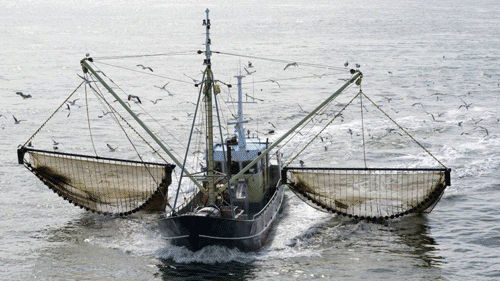Seafood mislabelling puts consumer rights and conservation in danger

Seafood sold in Australia is not what it seems.
More than 10% of seafood sold is mislabelled, with DNA tests showing that some seafood being consumed is actually the meat of endangered species.
The Minderoo Foundation conducted a national study, testing 672 seafood products sold at Australian supermarkets, fish markets and restaurants and found 11.8% didn't match what was on the label.
Research results have been published in the peer-reviewed journal Scientific Reports.
"We selected seafood products which consumers tend to buy more of — hoki, prawns, shark, snapper, squid and tuna," ocean policy manager at the Minderoo Foundation and co-author of the study, Emily Harrison, told Nadia Mitsopoulos on ABC Radio Perth.
DNA tests showed shark and snapper species, along with imported seafood were incorrectly labelled.
In Tasmania, a worst-case scenario showed imported stingrays were actually critically endangered spotback skates from South America.
In a WA restaurant, another endangered species, the smooth Hammerhead which is globally vulnerable, was being sold as a generic piece of shark.
Co-author Dr Chris Ilcox said a quarter of products sold named particular species, the rest used vague terms such as flake and snapper.
"Flake, for instance, officially refers to gummy shark but is often misused to describe any type of shark meat," Dr Wilcox said.
"Fifteen of the mislabelled flake products were actually elephant fish, which are only distantly related to sharks.
"In one instance, we found flake served as battered fish and chips was actually school shark, which is classified as critically endangered by the International Union for Conservation of Nature red list of threatened species."
Harrison said, "Shark was actually the worst when it came to mislabelling ... 35.9 per cent of shark we found was mislabelled, and snapper followed in close pursuit at 25.2 per cent.
"In one restaurant that we sampled snapper from, we actually found it was parrot fish, which is still fine, but you're paying a premium for the snapper label and receiving a cheaper product."
Consumer rights and conservation are both being threatened by incorrect labelling.
"Australians are increasingly aware of the need to protect our ocean from unsustainable fishing and want better information about the seafood on offer so they can be confident in their purchase," Harrison said.
"We know from previous research that consumers assume the checks and balances have already been done before the point of sale."
The Australian government is currently considering measures to prevent the importation of illegal, unreported and unregulated seafood.
"Consumers should be able to rely on the labels to represent what's actually in the package,” Dr Wilcox said.
"We wouldn't accept that in other products, so we shouldn't have to accept it in seafood."
Jonathan Jackson, 7th August 2023







